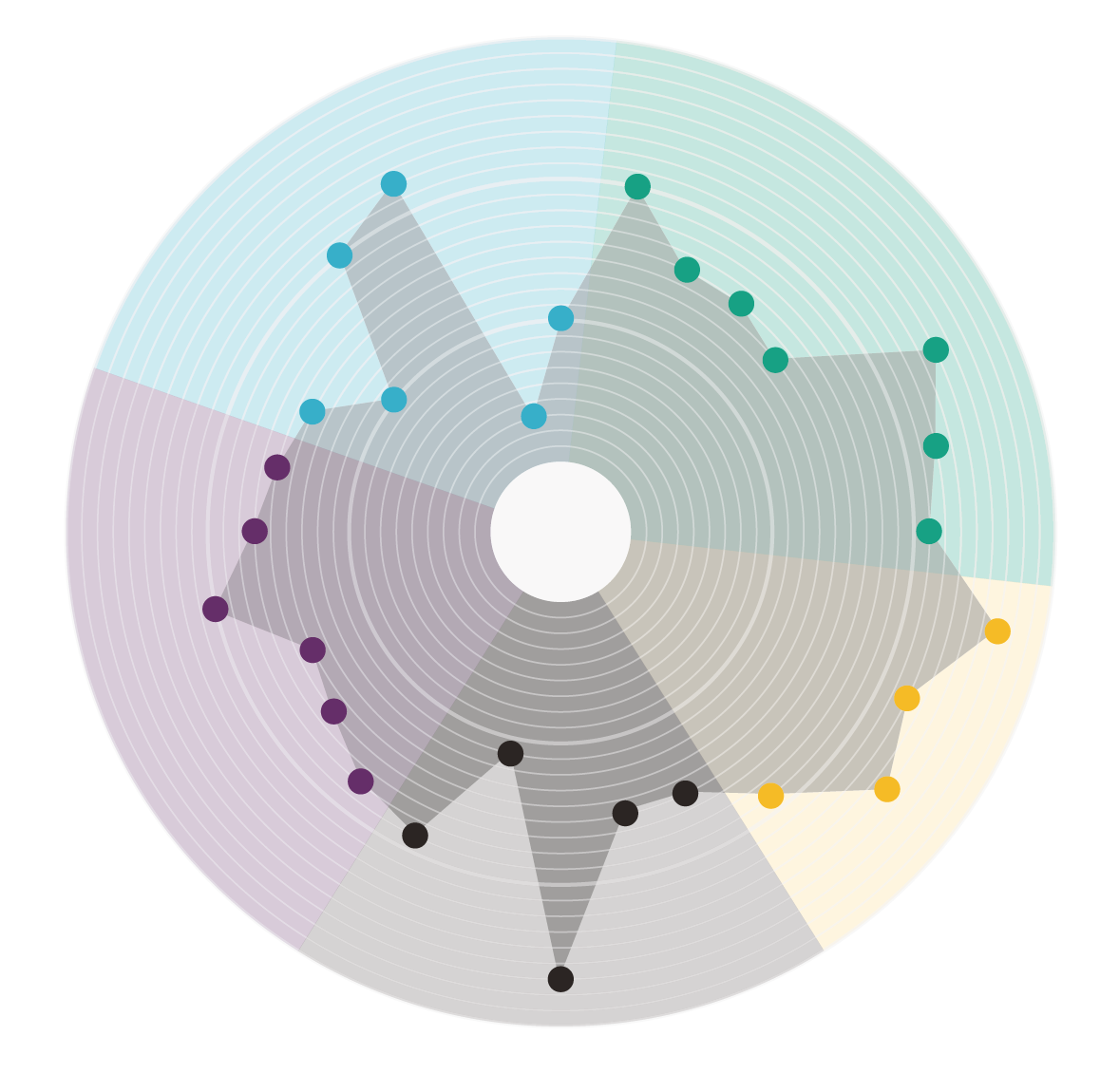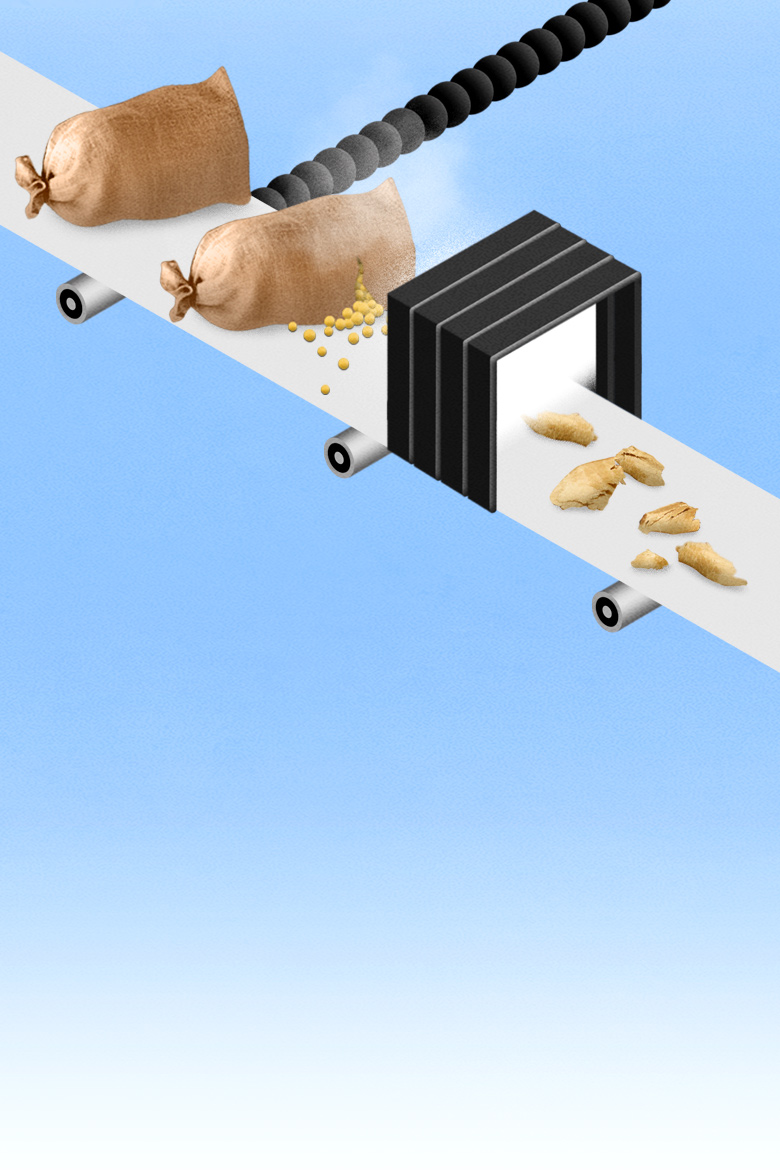
Company: Planted (Kemptthal, canton of Zurich, a spin‑off company of ETH Zurich, 2019)
Its goal: Meat replacement products made of vegetable protein
State of development: Already available in the supermarket, with market entry planned for Germany and Austria.
Eating less meat is good for the environment. Replacement products made of plants can help with this – such as the imitation chicken made by the Zurich start-up company Planted. It comprises proteins from yellow peas, pea fibres, water and rape oil. These ingredients are heated up and placed under pressure, then kneaded into a kind of dough. The spherical pea proteins then arrange themselves into long chains. The result is a fibrous texture that is reminiscent of chicken. Today, this company is also making ersatz meat for doner kebabs and is working on other imitations – such as fake fish and beef. But are these really better for the environment? “We are busy gathering precise, scientifically sound data about this”, says Planted’s media officer Virginia Beljean. According to current estimates, the faux chicken needs only half as much water and land as its real cousin.
What was first, the chicken or the peas?

Company: Legendairy (Berlin, Germany)
Its goal: Dairy products without cows
State of development: The product is only now being made
Cows produce milk – and a lot of methane that is warming up the planet. Making dairy products in a climate-friendly way is one of the goals of the start-up company Legendairy. Instead of cows, it uses yeast and bacterial cells. These are genetically altered so that they produce proteins that are normally found in milk, such as casein. Their aim is that the final product will be able to be processed further in the traditional manner to make cheese, yoghurt and so on. In comparison to similar approaches, such as manufacturing meat from cell cultures, Legendairy has an advantage, says its Swiss CEO and founder Raffael Wohlgensinger, because the procedure they use is already established on an industrial scale. One of its current uses is to produce insulin.
Milking the yeast
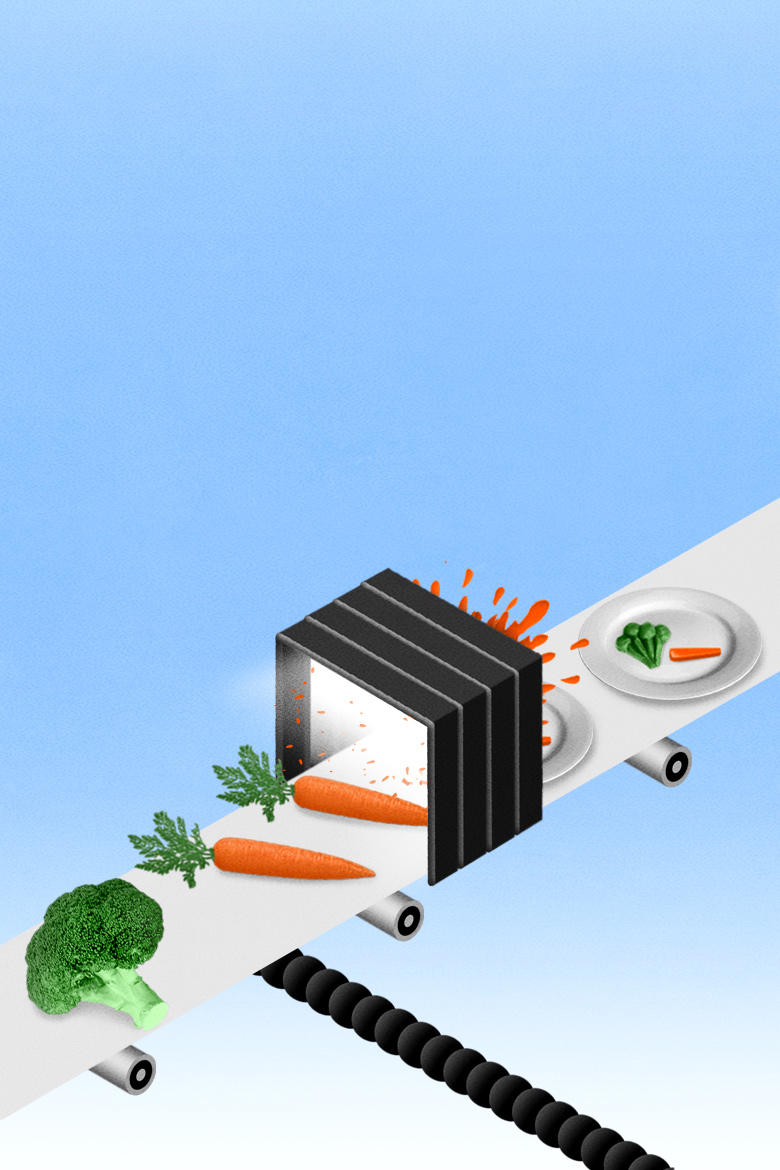
Company: Emotion Food Company (Lausanne, VD)
Its goal: Meals for people who have difficulty swallowing
State of development: One product is currently in use in 150 care homes and hospitals in French-speaking Switzerland, France, Italy and Spain
Many older people have difficulty swallowing, so their meal plans often feature porridge instead of steak. This can lead to frustration and ultimately to malnutrition, says Gabriel Serero, the founder of the Emotion Food Company. So he has developed a product in which puréed food is given form and texture again. It utilises a kind of gelling agent made up of seeds and seaweed. For example, you can add it to puréed broccoli, heat it up, then pour it into a silicon mould in the shape of a broccoli floret. When the mixture has cooled down, it’s once more assumed the form of broccoli. This means patients can literally pick up their ‘porridge’ and bite into it. It feels like a piece of cheese. “If you crush a piece in your mouth between your tongue and your palette, it becomes soft again, rather like ricotta”, says Serero.
Mimicry in the kitchen
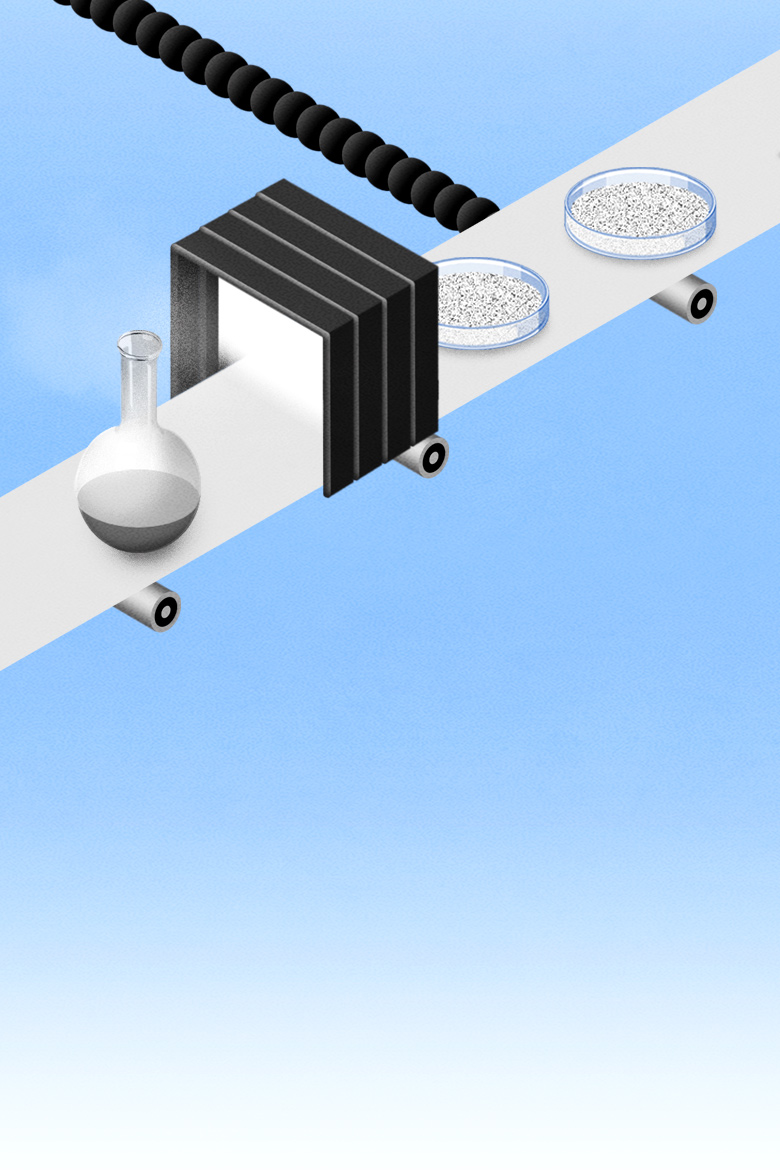
Company: Ketoswiss (Basel, a spin-off company of the University of Basel, 2017)
Its goal: Food supplements for migraine sufferers
State of development: Product development and efficacy studies
In Switzerland, every tenth person suffers from migraines. One unusual therapy for them is the so-called ketogenic diet, which uses few carbohydrates and a lot of fat. This is because the brain gets most of its energy not from sugar, but from so-called ketone bodies that arise when the liver breaks down fat – a process called ketogenesis. A study has now claimed that overweight migraine patients who follow a month-long ketogenic diet afterwards only have an average of about one migraine attack a month instead of three. The neuroscientist Elena Gross – who also used to suffer from bad migraines – is now hoping to bring these ketone substances into the body without a special diet. She has founded Ketoswiss, and is working on a product that contains them in powdered form. Gross says that initial results have shown that ketone bodies can indeed be transferred from this powder into the blood, where they lead to therapeutic ketogenesis. Further investigations into the powder’s efficacy are underway.
Putting headaches on a diet
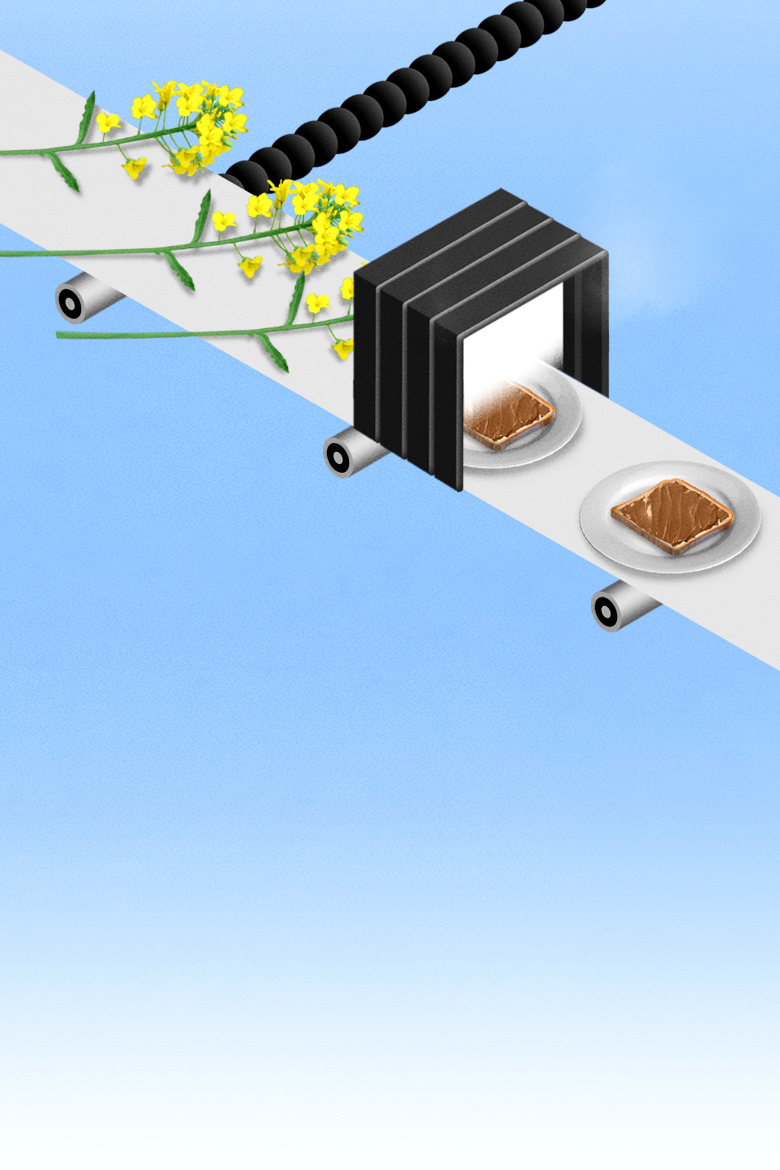
A project of: Fraunhofer Institute for Process Engineering and Packaging IVV (Germany)
Its goal: Healthier and more sustainable fats
State of development: The Polish company Maspex will soon be bringing a finished product to the market.
Chocolate spreads contain many saturated fatty acids from animal fats that are connected with cardiovascular diseases. They also usually contain palm oil, which is often farmed unsustainably. Oleogels could be an alternative. These are liquid plant oils that are mixed with a gelator such as wax or protein resulting in a gel-like structure. The food technologist Christian Zacherl and his team from the Fraunhofer Institute have now developed an oleogel that comprises a mixture of rape or sunflower oil and vegetable proteins. Zacherl was able to reduce the proportion of saturated fatty acids in chocolate spread by 30 percent. Because the vegetable oils don’t have any taste of their own, the spread tastes like the original, he says. And since rape is often farmed as an intermediate crop and its transportation routes are shorter than for palm oil, it could also make chocolate spread more sustainable.
De-fatting the cream

Company: Micropow (Meilen, canton of Zurich, a spin-off company of ETH Zurich, 2019)
Its goal: Providing colour for meat replacement products
State of development: The product is only now being made
In order to get as many people as possible to eat less meat and play their part in more sustainable consumption, it helps if meat replacement products are as close to the original as possible. But the colour that comes from beetroot extract, for example, fades when you prepare it. “The manufacturers normally have a choice between a good colour when it’s raw, or after it’s cooked”, says Pascal Guillet, a food processing technologist and founder of the start-up Micropow. So he has developed a technology that can help. He packs colourings and flavourings in microscopically small fat capsules that are released only when exposed to pressure and warmth. Drops of colour are mixed with liquefied coconut oil in order to encapsulate them. This mixture is then atomised and cooled down to minus 20 degrees Celsius. The result is a red powder that can be used to give colour to a vegi-burger. When it is grilled, the fat capsules break open, releasing the colouring, and the ‘vegi-meat’ remains red.
There will be beetroot juice








